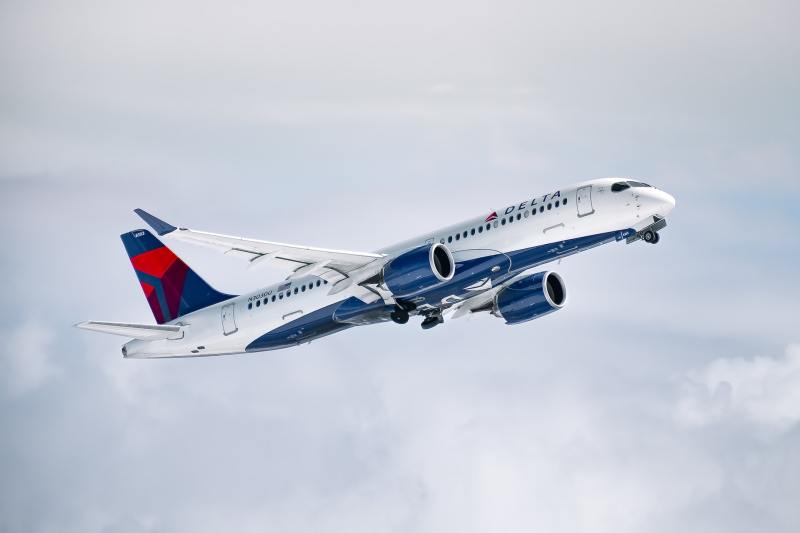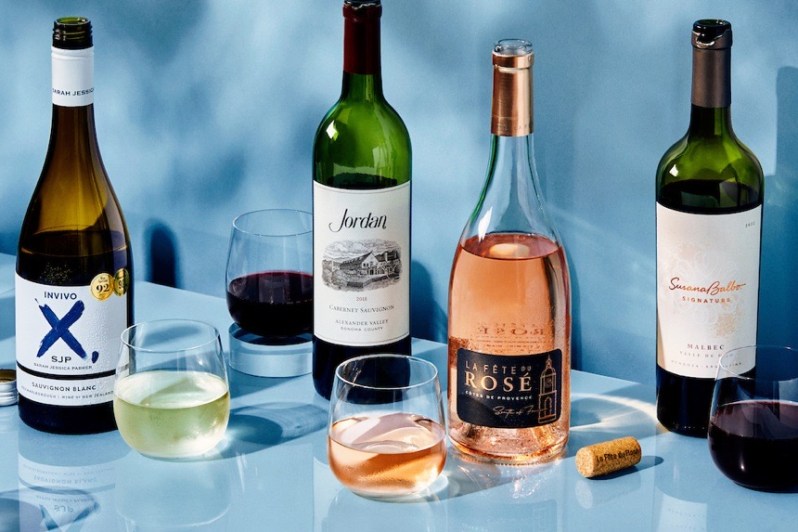
While people tend to get excited about traveling, the in-flight wine menu is rarely part of that equation. Historically, imbibing at altitude has been more of a stress reliever than a palate-pleaser and rarely the focus of the Delta drink menu.
We live in a brave new world for wine, and the culture is seeping into air travel. Master Sommelier Andrea Robinson teamed up with Delta Air Lines to curate a respectable wine list for its clientele. Passengers can now try everything from refreshing Chilean Chardonnay to Port.
Mike Henny is the managing director of onboard service operations at Delta. He says the idea was to “wow” customers with the new offerings. “We selected from over 1,300 options after a robust RFP process, working with our own internal Delta teams, longtime partners like Master Sommelier Andrea Robinson, and even some Diamond Medallion members to gather feedback and narrow down our selections.
Delta and Robinson are no strangers; they’ve worked together since 2007. “We were thoughtful and intentional when choosing these wines,” says Henny. “Having delicious, premium wines is the baseline — we also wanted to work with partners that reflect Delta’s commitment to diversity and sustainability and share Delta’s values and passion for reflecting the diverse communities we serve.”
But what are the challenges of serving wine on a plane? “The biggest thing would be the difference in altitude and how that impacts your sense of taste and smell,” says Robinson. “When I started working with Delta, we tested wine selections in the air to understand the differences in drinking wine at altitude. Now that we’ve done this for a long time, we know the most important characteristics, and it’s more about keeping up with all the evolution in the wine industry.”
There’s a bit of a juggling act, finding a happy medium between what presents well under the conditions and trends. “The biggest thing is to take what we know about what shows well in flight and overlap that with the new wine styles coming on the scene,” Robinson says. “For example, Rose was a big opportunity that was easy and worked well onboard because of its acidity. However, some Napa Valley Cabernet doesn’t show well at altitude because it’s too tannic, with an amplified drying sensation in-flight that overpowers the fruit.”

New wines on the Delta drink menu
Some 17 wines made the grade. Robinson is particularly jazzed about a few members of the list. “I’m excited about the Cune Reserva Rioja, which is bottle-aged for six years and will taste great at altitude,” she says. “I’m also stoked about the Invivo X SJP Sauvignon Blanc,” Robinson says. “It’s truly a juggernaut of the category in terms of popularity. This one tastes like passionfruit and is explosive with lots of acidity.”
In addition to the Spanish and New Zealand wines mentioned above (the Invivo is a Sarah Jessica Parker project), Robinson is also amped about a Chardonnay from House of Brown, Napa’s first Black-owned label. “It’s a style we incubated with them to not be too oaky or buttery for in-flight, and it turned out quite well,” she says.
As far as creating a tasting experience goes, airlines have the advantage of a captive audience. But they have disadvantages too, like lack of space. “We focused on building out a strong rotating wine list, so flyers will see new wines every few months,” Henny says. “We keep track of customer feedback to guide our selection process for future cycles.”
Since plane travel became a thing, wine hasn’t really been at the forefront. Sure, first class gets its complementary bottomless bubbles, but generally speaking, there hasn’t been much beyond that. Throw a recent pandemic and supply chain shortages in there, and it’s only recently that airlines are taking the stuff seriously (and gaining greater access to it).
That bodes well for the future. Travelers shouldn’t have to throw back a Barefoot Moscato. We can do better. And Delta days, this is just the beginning. “This new wine program isn’t a ‘one and done,’” Henny says. “As we look to the future, you can expect to see refreshed options as we continue to add new partners, play around with our wine offerings, and explore food and dessert pairings. We will also continue to work closely with our flight attendants to enhance Delta’s service; our people are the key to elevating the experience of flying with Delta, and our flight attendants are critical to delivering the hospitality and service excellence we’re known for.”
It seems like the recipe for some elevated wine experiences at 30,000 feet, not just through Delta but other airlines, too. Sure, not all wines work, but approachable offerings seem to do the trick, and there have never been more in the market. We’re already seeing pairing options and the like while flying. Perhaps soon, we’ll get a full-blown experience not unlike being in a tasting room on land.
If wine and travel are your thing, we’ve got you covered. Check out our favorite wines to add to your collection and the best wine country regions for outdoor travel. Also, here’s some context about drinking at altitude. Happy travels!


